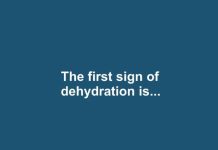Restless Legs Syndrome (RLS) is a neurological disorder that can significantly impact daily life. Characterized by an uncontrollable urge to move the legs, RLS often manifests during periods of inactivity, particularly in the evening or nighttime. This condition can lead to uncomfortable sensations, disrupting sleep and diminishing overall quality of life. While the precise cause of RLS remains elusive, it is widely believed to be linked to an imbalance of dopamine, a neurotransmitter responsible for transmitting signals that control muscle movement.
Understanding RLS is essential for those affected, as it empowers them to seek appropriate management strategies and improve their well-being. This article delves into the symptoms, non-medication approaches, lifestyle changes, dietary adjustments, and alternative therapies that can help alleviate the discomfort associated with RLS.
Identifying the Symptoms of Restless Legs
Recognizing the Key Signs
The hallmark symptom of RLS is the overwhelming urge to move the legs, often accompanied by unpleasant sensations such as tingling, burning, or itching. These sensations typically arise when at rest and are temporarily relieved by movement. Individuals may find themselves pacing, stretching, or shifting positions in bed to alleviate the discomfort.
Symptoms can vary in intensity and may worsen during periods of inactivity, stress, or fatigue. Furthermore, RLS can lead to significant sleep disturbances, resulting in daytime drowsiness, irritability, and difficulty concentrating. Understanding these symptoms is crucial for timely intervention and effective management.
Exploring Non-Medication Approaches
Embracing Lifestyle Modifications
For individuals who prefer to avoid medications, several non-pharmacological strategies can effectively manage RLS symptoms. These approaches encompass lifestyle modifications, dietary changes, exercise, relaxation techniques, and alternative therapies. Identifying and addressing any underlying conditions—such as iron deficiency or peripheral neuropathy—can also play a significant role in alleviating RLS symptoms.
The Importance of a Holistic Approach
Taking a holistic approach to managing RLS can enhance overall well-being and improve quality of life. By integrating various strategies, individuals can develop a personalized plan that addresses their unique needs and circumstances.
Lifestyle Changes to Alleviate Discomfort
Establishing Healthy Routines
Making specific lifestyle changes can significantly reduce the severity of RLS symptoms. Establishing a consistent sleep schedule is vital, as it helps regulate the body’s internal clock and promotes restful sleep. Additionally, avoiding stimulants such as caffeine and alcohol can have a positive impact on symptom management. Quitting smoking is another beneficial change, as nicotine can exacerbate RLS symptoms.
Mindful Distractions
Engaging in activities that occupy the mind can also be advantageous. Reading, solving puzzles, or participating in hobbies can distract from the discomfort associated with RLS. Keeping the legs active during the day—through short walks or light exercises—can further alleviate symptoms and promote overall health.
Dietary Adjustments for Restless Legs Relief
Nutritional Considerations
Diet plays a pivotal role in managing RLS. Ensuring an adequate intake of essential nutrients such as iron, magnesium, and folate can help reduce symptoms. Foods rich in these nutrients include leafy greens, nuts, seeds, and lean meats. Incorporating a variety of these foods into your diet can enhance overall well-being and support symptom relief.
Limiting Trigger Foods
It is advisable to limit or avoid caffeine and alcohol, as these substances can exacerbate RLS symptoms. Staying hydrated and maintaining a balanced diet can contribute to better management of the condition. Additionally, consulting with a healthcare professional or nutritionist can provide personalized dietary recommendations tailored to individual needs.
The Role of Exercise in Managing Symptoms
Embracing Physical Activity
Regular physical activity is a cornerstone of effective RLS management. Engaging in low-impact exercises such as walking, swimming, or cycling can help reduce the severity of symptoms. These activities promote circulation and enhance overall muscle function, contributing to improved comfort.
The Benefits of Stretching and Yoga
Incorporating stretching and yoga into your routine can also promote relaxation and improve blood flow. These practices can help calm the nervous system, making them particularly beneficial for individuals with RLS. However, it’s crucial to avoid overexertion, as intense exercise can sometimes worsen symptoms. A tailored exercise routine that considers individual fitness levels can be instrumental in managing RLS effectively.
Relaxation Techniques to Soothe Restless Legs
Calming the Mind and Body
Relaxation techniques can provide significant relief for those suffering from RLS. Practices such as meditation, deep breathing exercises, and progressive muscle relaxation can help calm the nervous system and alleviate symptoms. These techniques encourage mindfulness and reduce stress, which can be beneficial for overall well-being.
Physical Comfort Measures
Additional comfort measures, such as warm baths, massages, and the use of heating pads or cold packs on the legs, can provide temporary relief from discomfort. These methods can help soothe tense muscles and promote relaxation, contributing to a more comfortable experience.
The Impact of Sleep Hygiene on Restless Legs
Prioritizing Quality Sleep
Good sleep hygiene is essential for managing RLS effectively. Establishing a regular sleep routine, creating a comfortable sleep environment, and minimizing exposure to screens before bedtime can significantly improve sleep quality.
Pre-Bedtime Rituals
Incorporating relaxation techniques into your pre-bedtime ritual can further enhance sleep hygiene. Avoiding large meals and caffeine close to bedtime is also advisable, as these factors can disrupt sleep patterns and exacerbate RLS symptoms. By prioritizing sleep hygiene, individuals can create an environment conducive to restful sleep.
Alternative Therapies and Natural Remedies
Exploring Holistic Options
Several alternative therapies and natural remedies may offer relief for RLS symptoms. Practices such as acupuncture, chiropractic care, and reflexology have shown promise for some individuals seeking non-traditional approaches to symptom management.
Herbal Supplements and Precautions
Herbal supplements, including valerian root, chamomile, and passionflower, may promote relaxation and improve sleep quality. However, it’s crucial to consult with a healthcare professional before trying new supplements or therapies to ensure they are safe and appropriate for your specific situation.
When to Seek Professional Help
Recognizing the Need for Expert Guidance
If RLS symptoms persist despite implementing lifestyle changes and non-medication approaches, it may be time to seek professional help. A healthcare provider can conduct a thorough evaluation, ruling out underlying conditions and recommending appropriate treatment options.
The Importance of Early Intervention
In some cases, medication may be necessary to manage symptoms effectively. Early intervention can prevent complications and improve quality of life. By working closely with a healthcare professional, individuals can develop a comprehensive treatment plan tailored to their unique needs.
Conclusion:
Empowering Your Journey with RLS
Restless Legs Syndrome can be a challenging condition to navigate, but understanding its symptoms and exploring various management strategies can empower individuals to take control of their health. By incorporating lifestyle changes, dietary adjustments, exercise, relaxation techniques, and alternative therapies, it is possible to alleviate discomfort and enhance overall well-being.
If symptoms persist, seeking professional guidance can provide valuable support and ensure that appropriate interventions are in place. With the right approach, individuals living with RLS can reclaim their quality of life and enjoy restful nights and energized days.










